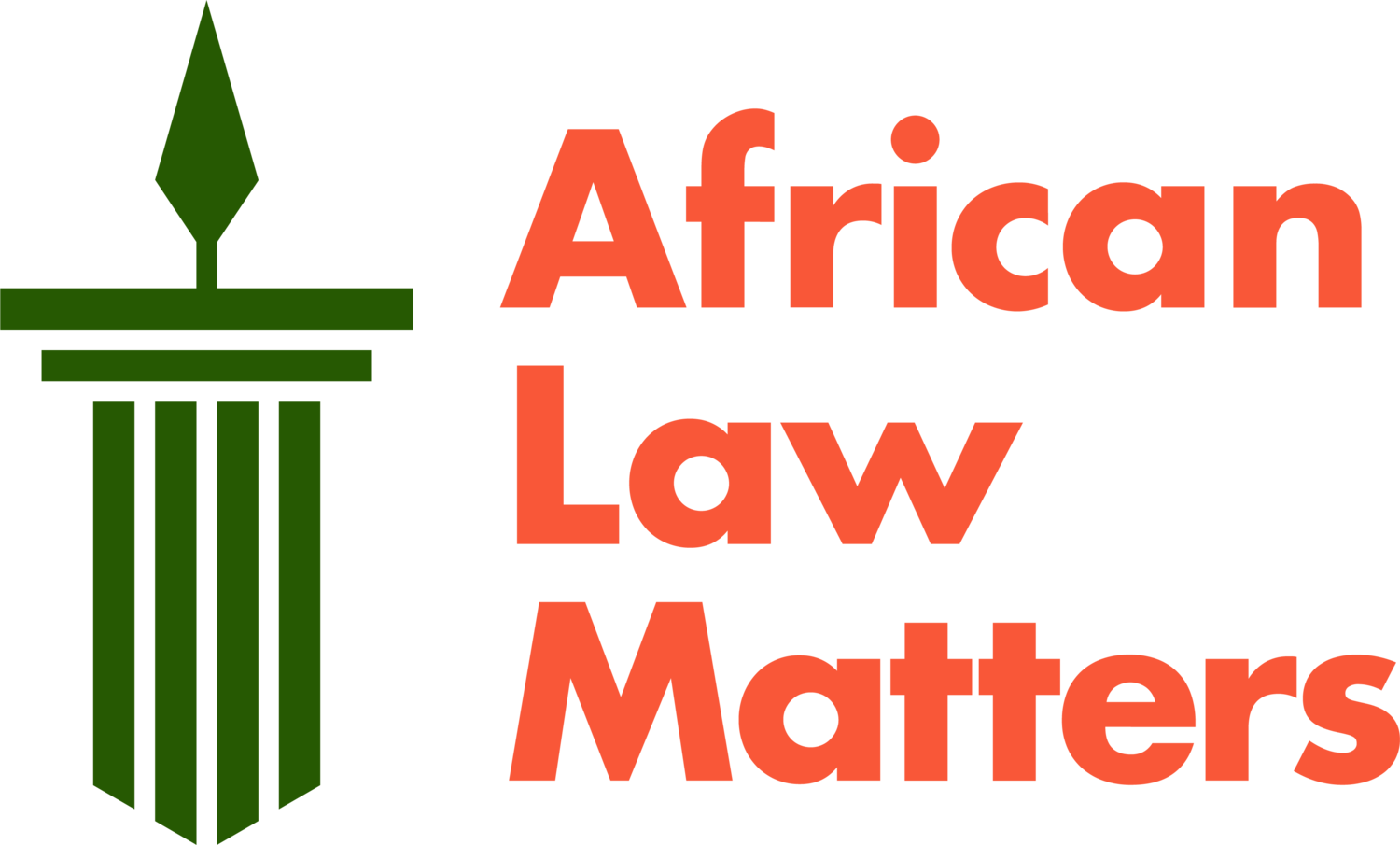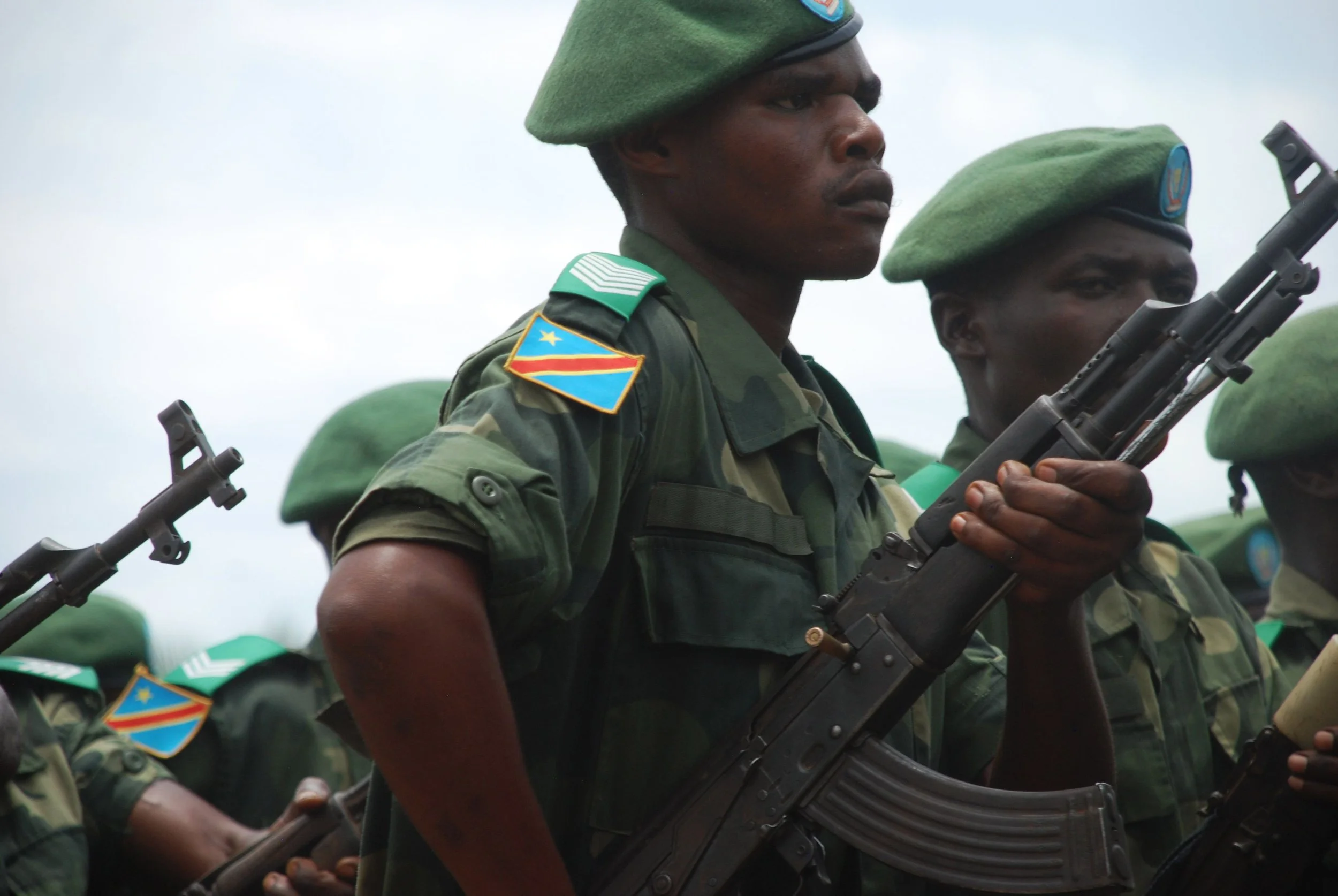The defence and security policy in the Congolese Constitution of 18 February 2006: what about the incumbent?
Congolese soldiers. Soldiers march in a parade to mark the deployment of a battalion of integrated troops in Walikale. Enough Project/Laura Heaton, 11 April, 2011, Creative Commons.
Editor’s note: This post was originally published in French on the IACL-AIDC Blog on 7 April 2022. We are proud to partner with the IACL-AIDC Blog in giving global voice to issues of importance to the African continent.
The Constitution of the Democratic Republic of Congo (DRC) was drafted in a context of belligerent conflict fundamentally marked by a climate of terror. This constitutional text is permeated by a real desire to achieve inter-institutional compromise and balance. In this sense, the Constituent Assembly wanted to establish a permanent dialogue between the institutions on matters essential to national life.
This is the case for defence and security, which are areas of collaboration between the President of the Republic and the Government under Article 91 paragraph 2 of the Constitution. At this level, it is appropriate to specify that there is no text underlying the Constitution that legally organizes the norm of collaboration set out by the Constitution.
However, it is relevant to note that Article 69 in fine of this Constitution grants the President exorbitant prerogatives in matters of defense and security. It states that the President is the guarantor of national independence, territorial integrity and national sovereignty.
In the intricacies and beyond the pure technique of law, a conflict emerges from the above between two structuring elements: a tradition in the conception of the chief in the DRC and a contextual requirement.
This article will therefore focus on this conflict before proposing a reversal of perspective.
Normative tension between Articles 69 and 91 of the Constitution of the DRC
Article 69 of the Congolese Constitution was drafted in terms almost identical to those of Article 5 of the French Constitution.
Beyond the significance of the French constitutional model, we must recognize that Africa has slowly found, over the years, the essence of its originality, the foundations of its legitimacy, the conditions for its effectiveness, and the forces of its creativity. Therefore, the writing of contemporary constitutions is a juridical ritual that bears the weight of history and tradition.
The Congolese Constitution of 2006 does not derogate from this logic, notwithstanding several extraneous elements within it.
In terms of history and tradition, it is appropriate to point out that the mental schema of the Congolese does not integrate the existence of a leader without the power to defend the national territory and ensure the safety of people. Inductively, this reality can be observed across sub-Saharan Africa. Indeed, leaders were among the charismatic figures in conflict management in traditional societies.
The contextual interpretation of Article 69 of the 2006 Constitution perfectly reflects this conception. While defence and security are perceived in the Congolese collective imagination as exclusive areas of intervention by the Head of State, Article 91 of the 2006 Constitution places them expressis verbis in a perspective of collaboration with the Government.
We must go back to the sources of the contemporary history of the DRC to find the justification for the articulation of this constitutional provision. Indeed, the 2006 Constitution was drafted in a fragile post-conflict context in which each protagonist still had full control over its army. The Constitution is therefore an expression of the balance of power between different military dynamics that have undertaken to neutralize each other.
In comparison, we can note that in France the Constitution is particularly vague as to the distribution of military powers between the President of the Republic and the Prime Minister and his government.
The vagueness, deliberately maintained by the French constitution, is clarified by a constitutional practice that promotes the pre-eminence of the President of the Republic in the field of defence, since he is involved in the entire military process: armament, strategy, operations, etc.
In the DRC, the dichotomy between the tradition of Article 69 and the contextual burden of Article 91 is likely to generate conflict. It is obvious that the problem does not arise if the institutions belong to the same political majority.
“The Constitution is therefore an expression of the balance of power between different military dynamics that have undertaken to neutralize each other.”
It is different in the context of political contestation. The tendency is then to constantly question the supremacy of the president. Each political camp legitimately claims its constitutional prerogatives. From 2019 to 2020, the DRC has seen the beginnings of such a situation, which has demonstrated sufficiently in fact and in law that it carries an undeniable risk of crisis.
This political and institutional logic, which can change according to the electoral cycle, is a legitimate emanation of democracy. However, it can be very dangerous in a context where a republican army does not yet exist, as with the army of the DRC. After having undergone several processes of mixing and brassage (the process of integrating rebel forces into the national army), the Congolese army has several armies within it that obey their former rebel affiliations more than the supreme command. It is also worth noting that several of the current senior officials in the DRC, potential prime ministers, are from the rebellions.
So, is a country with an army of multiple loyalties marked by permanent armed conflicts ready to support a crisis between the President of the Republic and the Prime Minister in the area of defense and security during a five-year term?
Constitutional coherence in defense and security matters as a guarantee of stability
The context in which the 2006 Constitution was developed has changed fundamentally after three electoral cycles. The elements that structure the expression of force have moved from the horizontal to the vertical. In this sense, the armed dynamics no longer gravitate around the central power as was the case during the period from 2003 to 2006. There is currently a decentralization and fragmentation of armed violence. This is evidenced by the fact that the state, as the sole repository of public power, is fighting several armed groups.
Such a picture calls for further homogenization of the Congolese army, which still remains a hydra. This requires: (1) The unification of the army's command, which de facto obeys complex and subtle sub-regional realities; and (2) the professionalization of the army, which must become a coherent whole strictly subject to the texts that govern it.
This process of reform to achieve an army-institution must be carried out over the long term in a climate of continued political stability. Therefore, it is concerning that the unspoken and meta-textual contradictions within the Constitution do not provide an environment that protects the defence and security sectors from the vagaries of political life.
The unchanging centrality of the state rests on defense and security. These matters should escape the weaknesses of constitutional elasticity. One of the essential functions of the Constitution is to produce stability and durability in the legal framework within which political actors operate.
Consistency requires that defence and security be placed under the authority of an exclusive holder. A systemic reading of the 2006 Constitution tends to point to the exclusive devolution of these sectors to the President of the Republic, as Article 69 sets out its manifestations through other relevant constitutional provisions, notably Articles 72, 83, 81, 85 and 86.
In this sense, the importance of Article 83 of the Constitution should be highlighted: "The President of the Republic is the Supreme Commander of the Armed Forces. He presides over the Superior Council of Defense."
These elements are part of a constitutional continuum that suggests that the 2006 Constituent Assembly wished to make the President of the Republic the sole authority in matters of defence and security.
Despite the fact that this is a provision that fundamentally structures the arrangement of power, the letter and spirit of Article 91 of the Constitution of February 18, 2006 deviates from the text of the Constitution as a whole with respect to the issues under consideration.
Moreover, it must be recognized that two nuanced normative issues emerge in light of all the above. First, to organize and limit rigorously the executive collaboration set out in Article 91 through a legal text other than the Constitution, in order to guarantee its existential extension. And, second, to rewrite this provision by amputating it from defense and security issues in order to ensure the readability of the constitutional coherence block.


